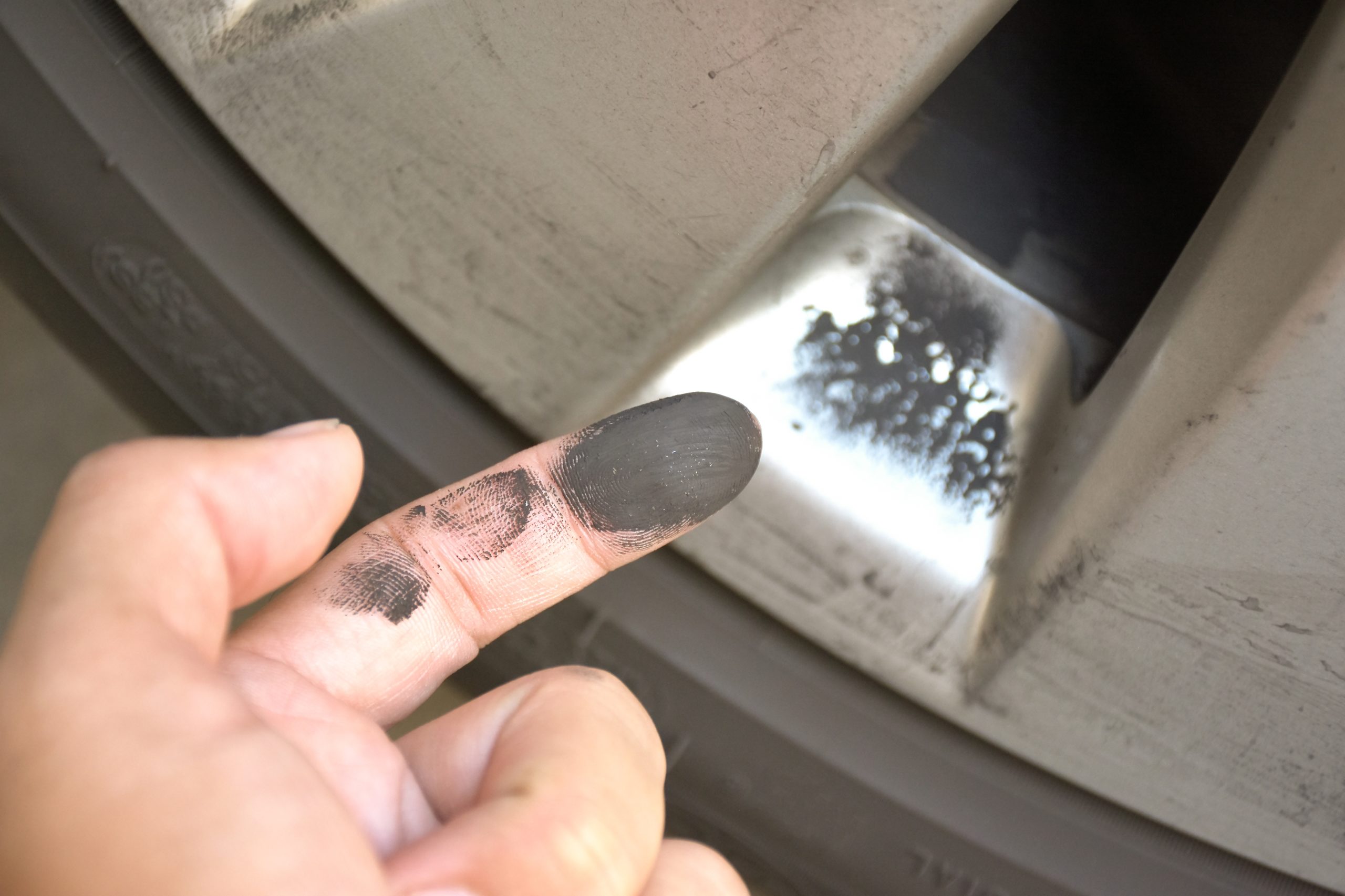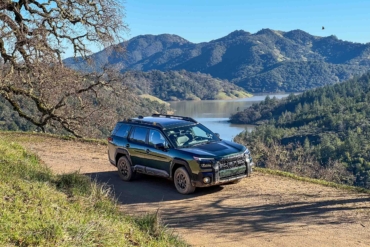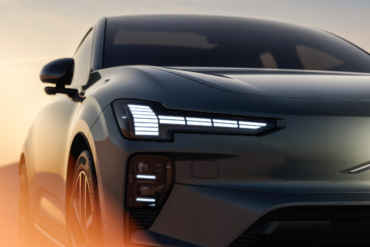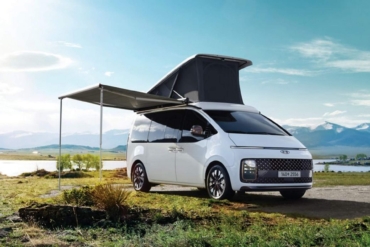It’s well established that EVs are much better for the planet than internal combustion (ICE) cars. A recent study by Ford and the University of Michigan found that light-duty passenger vehicles had 64% fewer cradle-to-grave greenhouse gas emissions than their ICE incumbents. Even when charged with coal-powered electricity, modern EVs are a climate win.
But they’re not always a win for your lungs. That study looked primarily at the greenhouse gas emissions that affect climate change — not particulate emissions (PMs). What’s not green about EVs is PM from brakes and tires. While all cars generate PM from wear components, EVs are around 20% worse in this category. That may not seem immediately obvious, so let’s break down why that’s the case.
Particulates Are the Problem

To go the distance, EVs require large, heavy batteries. For a given tire, a heavier car must overcome more friction, which creates more tire wear.
The chair of the National Traffic Safety Board (NTSB) recently commented on this because increased vehicle weight leads to increased traffic deaths: “A GMC Hummer EV weighs over 9,000 pounds, up from about 6,000 pounds. Its gross vehicle weight rating is a staggering 10,550 pounds. The battery pack alone weighs over 2,900 pounds — about the weight of a Honda Civic. The Ford F-150 Lightning is between 2,000 and 3,000 pounds heavier than the non-electric version. The Mustang Mach-E, Volvo XC40 EV, and RAV4 EV are all roughly 33% heavier. That has a significant impact on safety for all road users.”
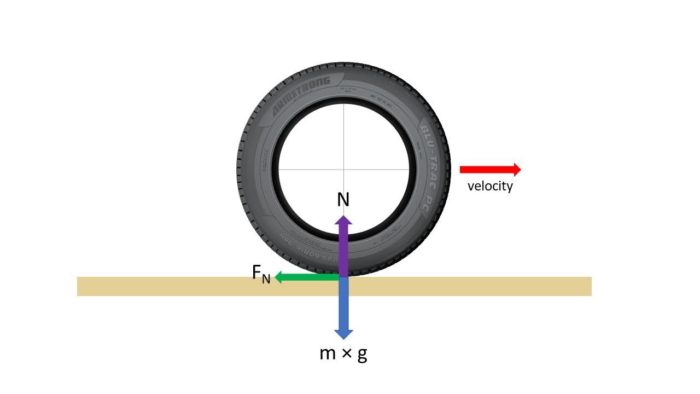
Bear with me as I do some math: friction is defined as FN = µ × m × g, where µ is the coefficient of friction (a constant), g is the gravitational constant, and m is the mass. With µ and g constant, the force of friction increases proportionately to mass. That 30% increase in mass means 30% more friction!
Driving behavior also plays a huge role in how quickly you wear down your tires. EVs are incredibly fun to drive — the generous torque and instant power delivery are addictive. Torque is the rotating force that is responsible for launching you forward from a stop and — often — squealing your tires in the process. That squealing is your tire shredding against the ground like cheese on a grater, and while some of that particulate creates that telltale skidmark on the ground, a lot of it ends up in the air.
Tire Choice Matters: Performance vs. Economy
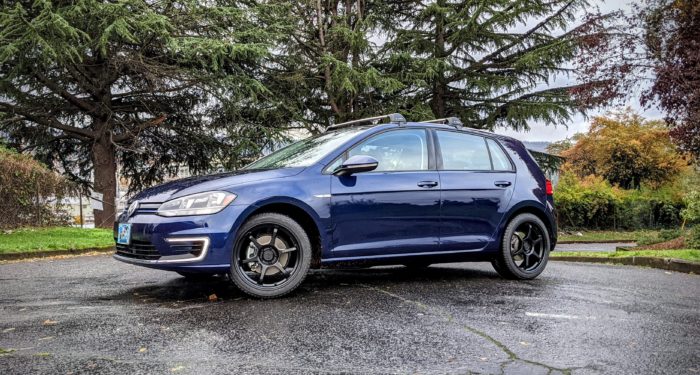
Most EVs are equipped with “eco” tires that have lower rolling resistance for longer range. From my experience, these tires are a bland compromise that lacks feel and performance.
The Bridgestone Ecopia tires that came stock on my e-Golf were so terrible that I would spin the tires constantly, even in dry conditions — and it’s been known to rain here in the Pacific Northwest where I live. I jumped at the opportunity to switch to a conventional tire when Michelin offered us a set of CrossClimate2 tires for review.
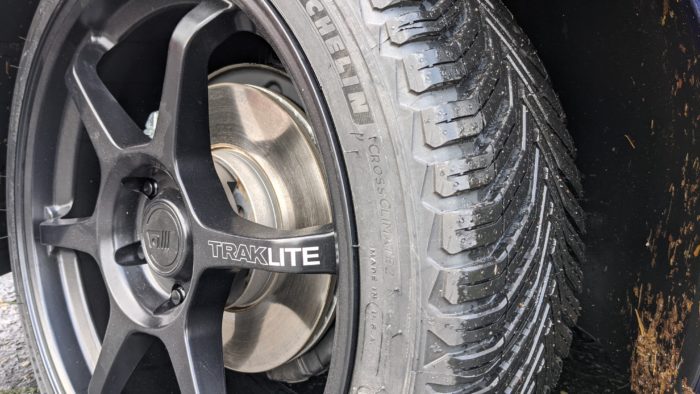
My e-Golf’s new shoes are fat, sticky, and stylish, especially so when mounted on Motegi Traklite wheels. The CrossClimate2 were instantly appreciated — a huge improvement compared to stock.
Even with all that traction, I can still skip a tire from a dead-stop, but it’s much reduced and handles any kind of precipitation with ease. It does pain me a bit to know that these conventional tires will wear out quicker and generate more particulate air pollution.
I also see a decrease in range of about 10% due to the increased resistance. There’s no getting around the fact that traction means friction, and friction must be overcome with energy.
Tire Companies Taking Action
Particulates don’t often make the news, but tire manufacturers are acutely aware of these pending challenges.
Pirelli R&D is working on switching to natural or synthetic rubbers for the base of its tires. In the tread, it’s trying to switch to plant materials like rice husks, which are less hazardous than silicate compounds.
Michelin Motorsport has been experimenting with their FIM MotoE tires and was able to up the proportion of sustainable materials by an average of 40%.

Goodyear is also in the game — their new Eagle GO concept tire uses a range of sustainable materials in the tread and can be “renewed” over its lifetime with new rubber, decreasing the amount of rubber waste.
While these are all pilot programs at the moment, the market-wide focus on environmental challenges is a strong positive indicator.
Big Particulate Problem
How big is the particulate problem exactly? According to Michelin, my EV will wear through tires 20% faster — which means 20% more particulate.
One positive is that particulate emissions are not responsible for the GHGs that cause climate change. They are heavy enough to stay earthbound, which you’ve probably noticed. If you’ve ever lived near a freeway, you can appreciate the dust that settles over your sidewalks, cars, and exteriors.
That dust likely started out as a tire or asphalt — nearly half of particulate emissions come from these sources.
Brake Dust
We haven’t touched on braking yet, but this is one area where EVs shine. With conventional brakes, we dissipate speed as heat by — you guessed it — friction. The friction between your consumable brake pads and rotors turns your kinetic energy (speed) into heat energy.

Electric cars can capture that kinetic energy — up to 70% in some cases — by using the drive motor as a generator. This means much less wear on the brake pads, so they last longer.
Regenerative braking in EVs probably doesn’t offset the increase in tire wear, but it helps.
Particulates Hit Home
PM is a serious and often overlooked problem for real people in our communities. Particulates are particularly tough on sensitive groups such as those with asthma. Residents closest to dense roadways will experience the worst effects, which often tend to be impoverished and lower-income families.
Globally the World Health Organization (WHO) estimates that 3% of cardiopulmonary and 5% of lung cancer deaths are attributed to PM. There are also demonstrated short-term effects, such as decreased cognition and links to depression.
Particulate emissions affect the local rivers and lakes we play in, making them more acidic and harming wildlife. It contributes to acid rain and the associated damage to ecosystems.
It’s also a problem for infrastructure. Friction affects the stationary surface as well as the moving one, so heavier vehicles are accelerating the wear of our roadways. EVs also don’t pay the gas taxes that are responsible for funding transportation infrastructure, a gap many states try to buffer by levying EV taxes during registration.
What Does All This Mean to You?
It means driving your Rivian to the trailhead doesn’t automatically earn you a tree-hugger merit badge. While in the big picture, electric is the best choice for the planet, what we really need to focus on is driving smaller and driving less. I know that’s not very American, but it’s the easiest way to be safer and healthier.

And, before you assume that a motorcycle is an answer, read this: Motorcycles Are Great on Gas, but Are They Bad for the Planet? Spoiler, gas-powered bikes aren’t as clean as you might think.
As battery technology improves, the weight penalty of EVs will disappear. Novel tire chemistry is also going to ease the burden on our lungs and our ecosystems. The grid is already beginning to shift away from coal and natural gas in favor of cheaper solar and wind sources, making EVs even more attractive. The future promises both cleaner air and lower GHGs.

But, while we’re waiting on fusion, the greenest thing you can do is keep your existing car well maintained — check that tire pressure — and drive it modestly — without that rooftop tent. It takes an immense amount of carbon emissions to build any new vehicle, gas or electric, so keep driving your beater Subaru ‘til the wheels fall off.
